Tuning an Isotron 20Mtr antenna
Now that I have enough gnuradio tools to measure reflection coeffecients,
sweeping across a range of frequencies collecting magnitue and phase
data it should be possible to put them to use for something practical
like tuning an antenna. I have this Isotron
purchased some time ago to use on 20 meter psk31 but never got around to
it. In fact, the first time I played around with it the tuning did not
make sense, altho I did not try very hard either. Anyway it seems like
a perfect candidate for first experiments, so here it is bolted to
a convenient support:
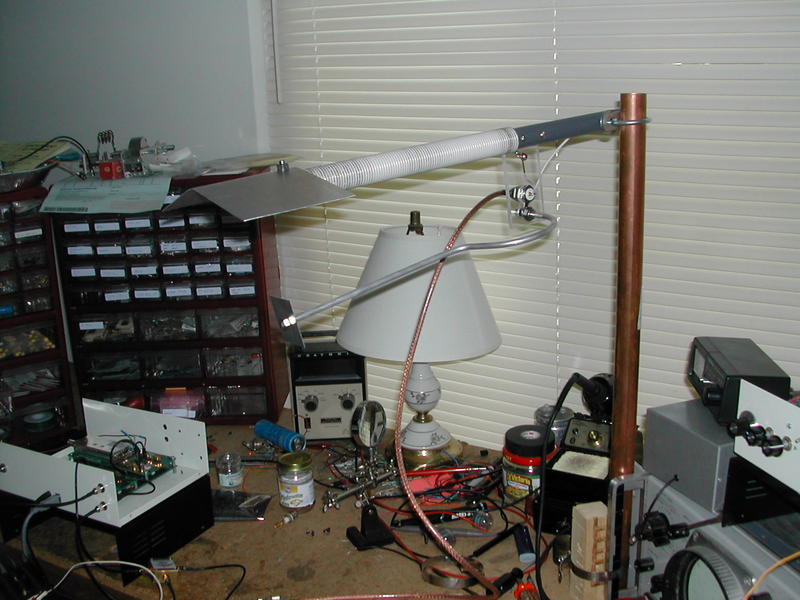
Moving the arm underneath is how you tune it. Next I rig up the test jig
with the amp, splitter and directional coupler like this:
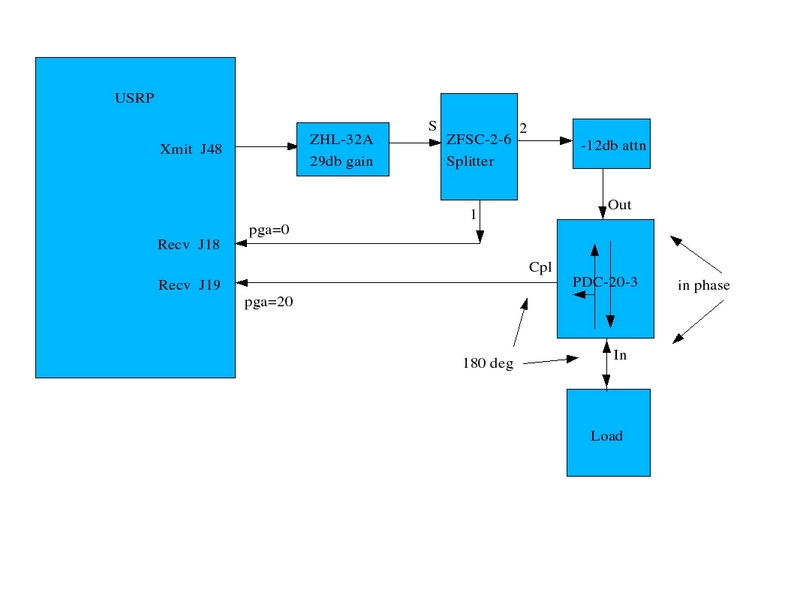
Then run the software and plot the data with gnuplot:
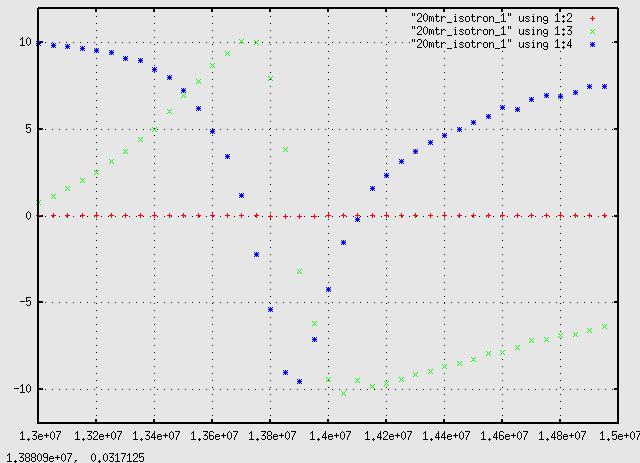
Ah ha - looks like something happens just below 13.9Mhz, so I'm in the ballpark. Turning up the Y range shows the reflected power:
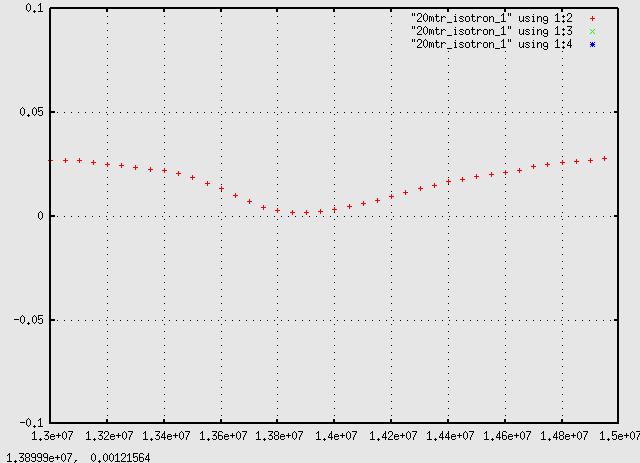
and shows the reflected power also dipping around 13.9Mhz. So I try moving the arm
closer to the coil on the antenna:
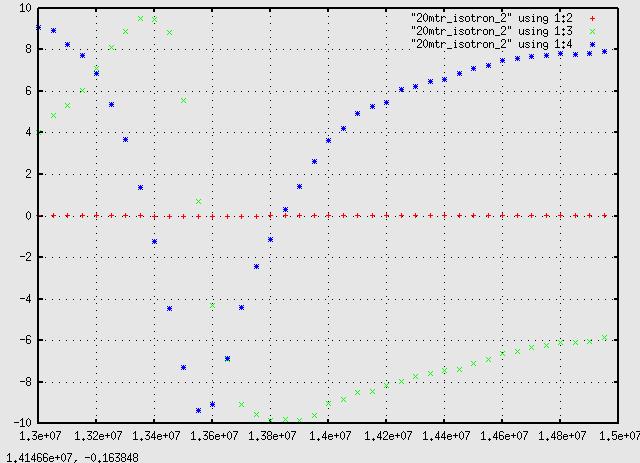
Now it's resonant at a lower frequency. Going the other way:
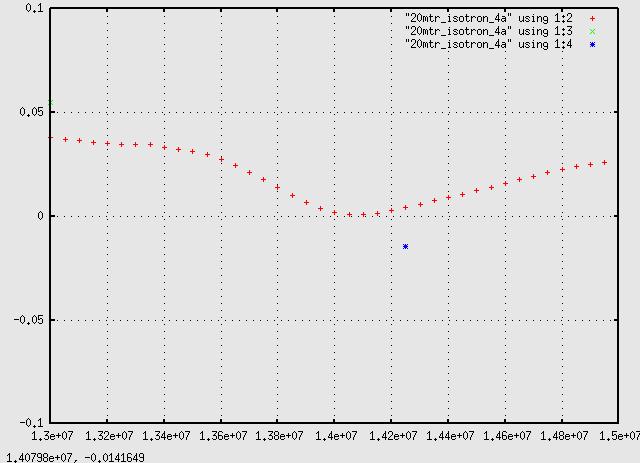
looks much better.
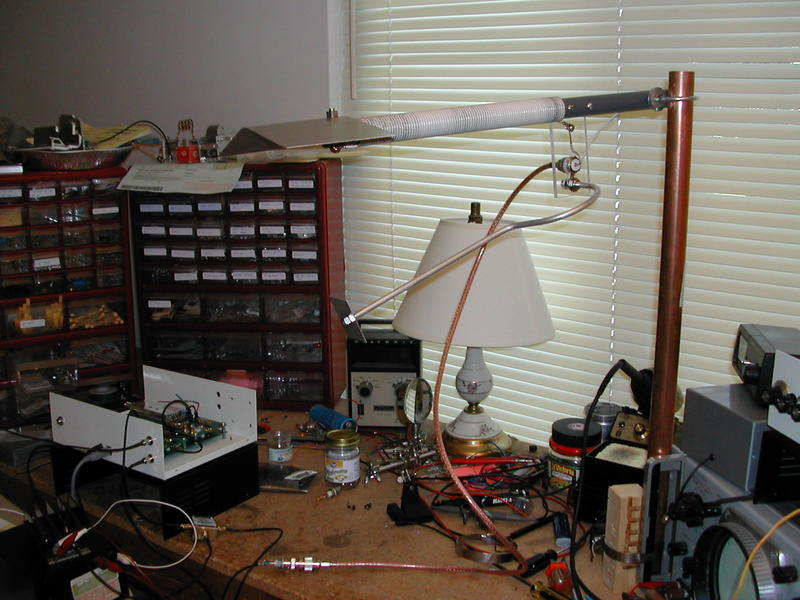
Well, that was easy. Eager to look at some kind of Smith chart plot, I try
a plot with the antenna disconnected - an open circuit at the end of the
transmission line.
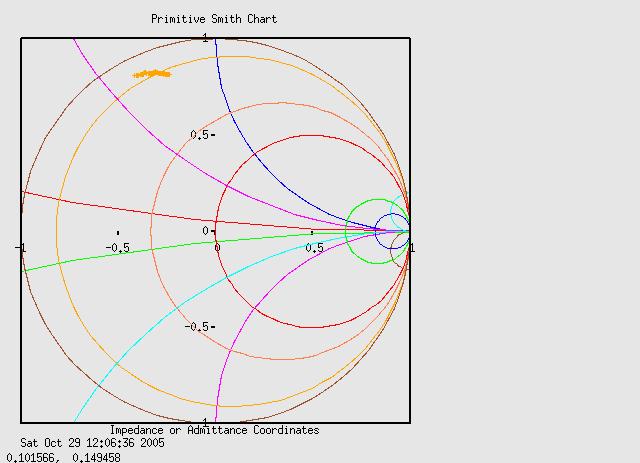
where the magnitude is about right but the cluster of points should be at
the far right. Eventually I'll have the software make a calibration run
with open, short, and Zo load, collect the data and apply it as error
correction, but for now everything is manual. Trying the same setup
with a short circuit termination:
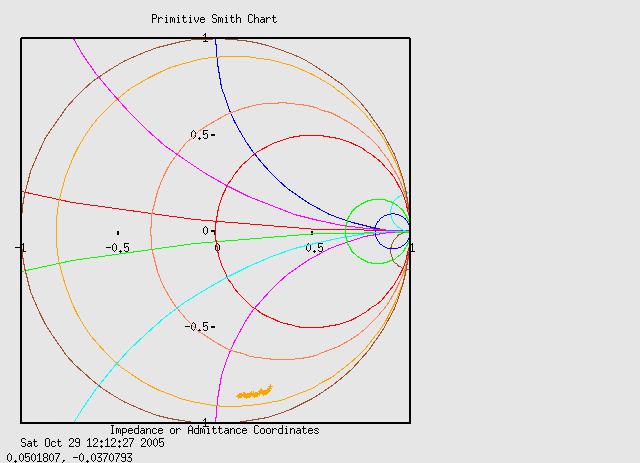
Which comes out perfect on the other side of the origin. However, they
should be on the horizontal axis, so applying a fixed corrective angle
in the software and rerunning an open:
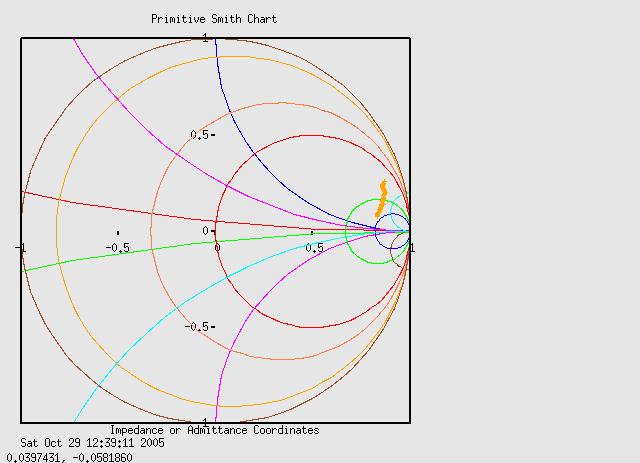
Which puts it in the right part of the chart if not right on infinite Z.
Trying short again with corrections:
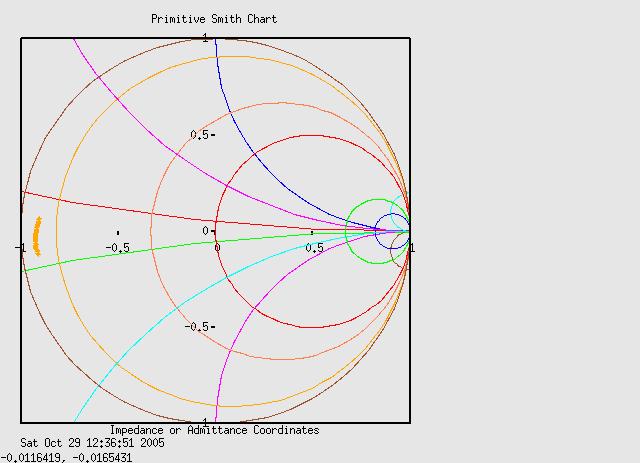
and thirdly with a 50ohm resistor load:
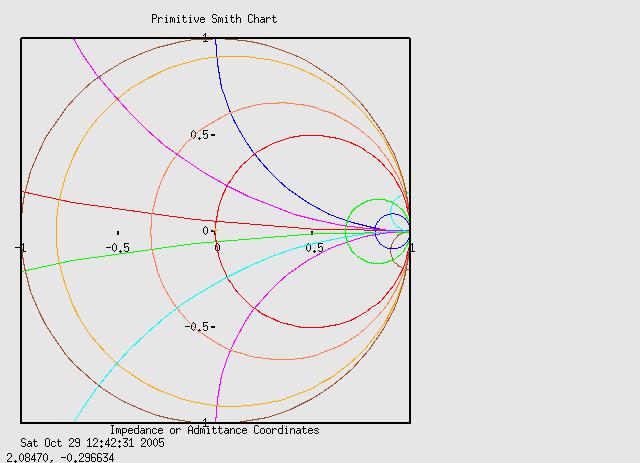
where the reflected magnitudes are all so small they are piled up on the
origin. Finally, the Isotron antenna:

which plots a sweep from 13Mhz to 15Mhz, starting with 13Mhz at the bottom
right, sweeping thru zero around to the top right at 15Mhz.
There is at least one obvious problem: the antenna is not only reflecting
applied power, but receiving signals at the same time! That might account
for some of the out of pattern points above.












